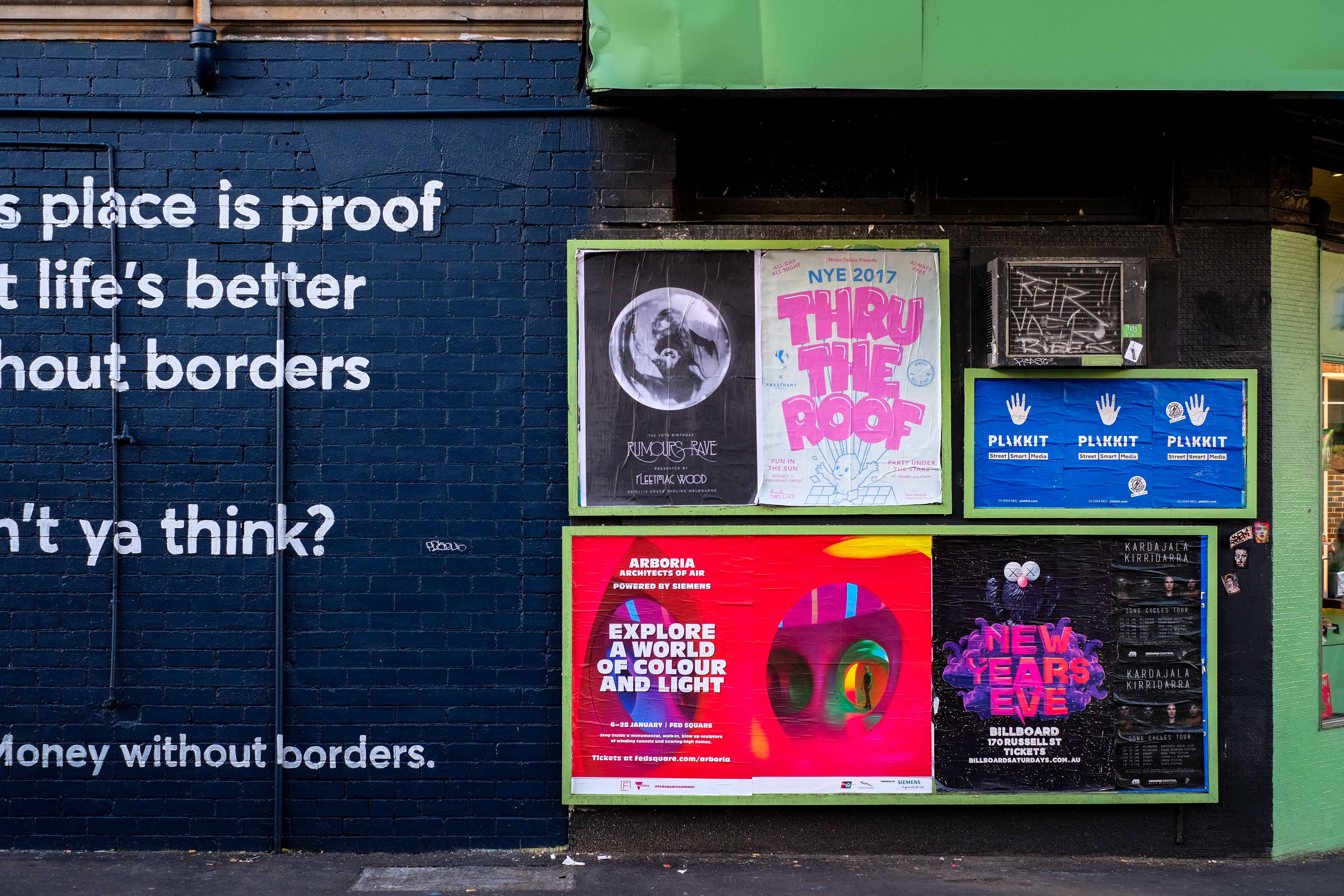
Pinterest Advertising: The Ultimate Beginner’s Guide
Pinterest ads have become a standard element in the advertising strategy of many companies. Since Pinterest Ads are also available in Germany and Austria, the image search engine offers numerous opportunities to position your products among pinners.
In this blog post, we are showing you the different ad formats that are available, along with the differences in campaign goals and how to optimize tracking of Pinterest Ads. You will also learn how to set up Pinterest Ads through our step-by-step guide, plus some nifty tricks for a successful start.
Why looking into Pinterest is worthwhile
Sure, there’s Instagram and Facebook. But Pinterest? Still, many businesses overlook the social network in their Social Media strategies, even though Pinterest had 433 million active users per month in Q1 of 2020. A large number of users focuses heavily on certain pins in order to find inspiration for shopping. And even those not actively looking for it end up finding things they want to check out on their next shopping trip. According to their own stats, Pinterest is 33% more effective than Facebook in bringing traffic to your online shop.
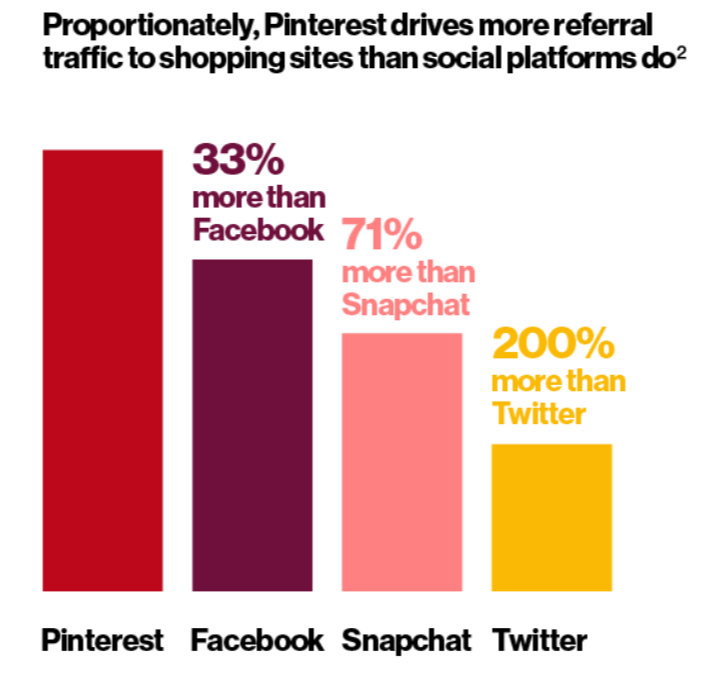
Are you new to Pinterest? You’ll find all the information you need to get started successfully in our blog post “Pinterest Marketing 101: Everything Companies Need to Know”.
An overview of various ad formats
Similar to other platforms, Pinterest offers a variety of ad formats. They all grow your reach by showing up in topic feeds, the home feed, and in search results of the selected target group. At the moment, six different ad formats are available.
1. Promoted Pins
Promoted Pins are the basic version of Pinterest Ads. They look like regular Pins but are marked as being advertorial content.
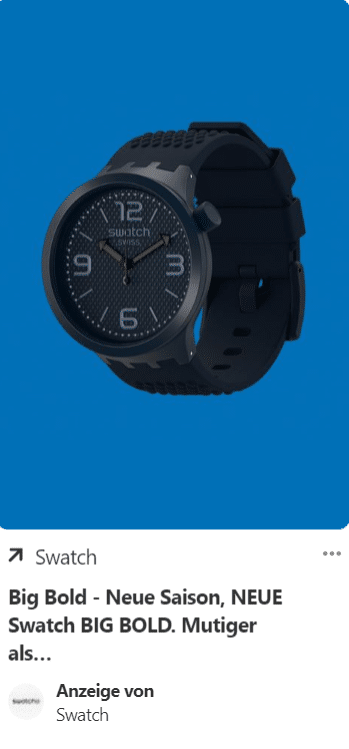
2. Promoted Video Pins
The video format is very successful on Pinterest as well. In addition, content can be shown in more detail by using video clips instead of regular Pins.
3. Promoted Shopping Pins
When you link or upload your product catalog to Pinterest, you can run Shopping Ads. They consist of images and put your products in the right light.
4. Promoted Carousels
Everyone who is familiar with Facebook Ads is probably well aware of the carousel format. We are talking about a Pin that consists of 2 to 5 pictures or cards that users can swipe through directly in their feed. They can also tap on the carousel and view the pictures in a larger format. Every picture can be linked to an individual landing page, which makes Carousel Pins ideal for promoting several products or services within just one story.
5. Promoted Collection Pins
Collection Pins are great for showing multiple aspects of a product or showcasing related products. You can add up to 24 Creatives to your Pin.
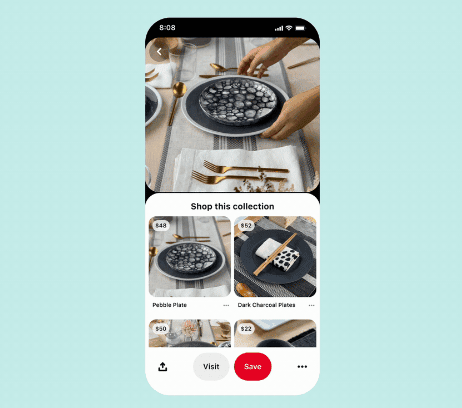
6. Promoted Idea Pins
Idea Pins are meant to show instructions or present content with storytelling. Visually, they are reminiscent of Instagram Stories.
Types of campaigns
Selecting a campaign objective determines which Pins are available to you and how billing works:
- Brand awareness: If you want to increase your brand awareness, you will be billed per every 1000 impressions.
- Video view: The same is true if you use videos to increase your brand awareness.
- Consideration: Here you increase the number of clicks on your ad.
- Conversions: If you set conversions as a campaign goal, you get users to convert on your website. Use this option if you want to increase registrations or purchases.
- Catalog sales: With this campaign objective, you make it even easier for users to discover your products and services.
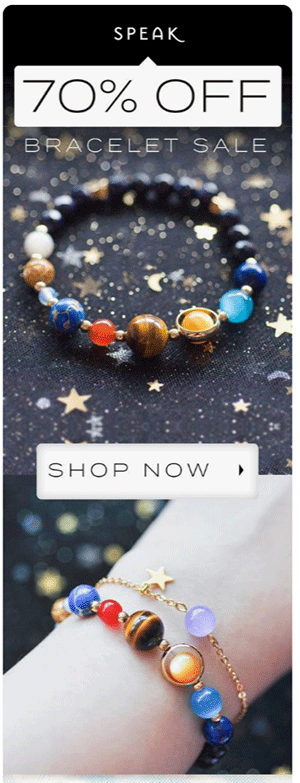
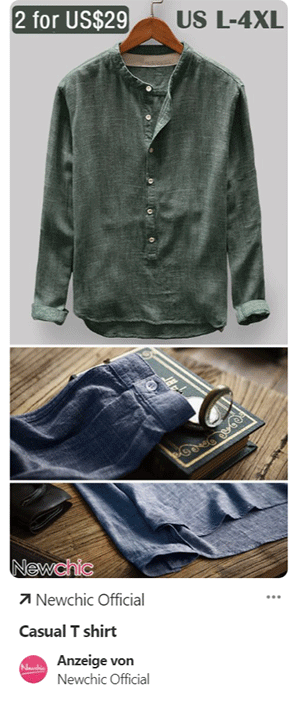
Your Targeting Options
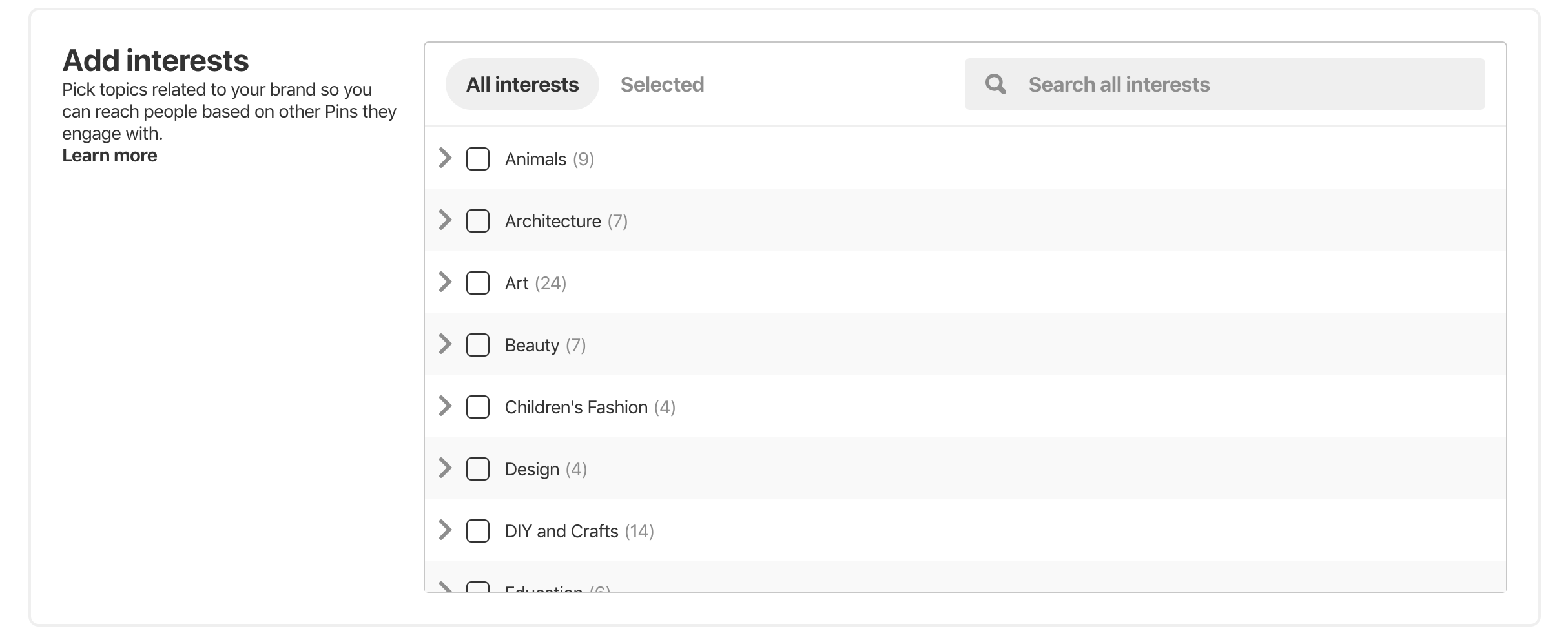
At the moment, a limited number of targeting options are available in Germany and Austria:
- Demographic data: Select your target group by gender, location, and language.
- Interests: By adding topics that are relevant to your brand or products, your Ads will be shown to Pinners who have shown interest in Pins with similar topics in the past. You can choose bigger topics, such as “health” at the top level, and then add further, more detailed topics such as “diet and nutrition” or “weight loss” to that greater topic.
- Keywords: The Keywords option is used to reach users who are searching for a certain phrase on Pinterest. A variety of matching options increases targeting precision. You can also come up with negative keywords and thereby exclude certain words from the search results.
- Remarketing: You can get in touch with clients who have already been in contact with your company or your content. You can choose from customer email lists, website visitors, users who have interacted with your company’s Pins, and users with a large overlap with valuable target groups (“act-alike audience”).
- Placement: Here you define where your ads should be displayed. Options include the home feed, search results, or on related pins.
- Advanced: Here the algorithm takes over and runs your ads on keywords and interests that are similar to the ones you selected. This way you can reach even more users.
Targeting according to age is only available in the USA right now.
The more you know about your target group, the more successful your marketing will be – on Pinterest, Facebook, or Instagram. Download our e-book “The Psychology of Social Media Marketing” for free right now and learn how to provide your target group with exactly what they are looking for.
Creating campaigns – A step-by-step guide
So you have decided to work with Pinterest Ads. Then your first step is to set up a Business Account – you can do so with just a few clicks. In order to start a campaign, follow these steps:
- Click on “Ads” in the top left corner of the Ads Manager, then click on “Create an ad”. You can also simply click on “+” on the top right.
- Decide on a campaign goal.
- Select a previously created campaign through the search bar, or enter the name of a new one.
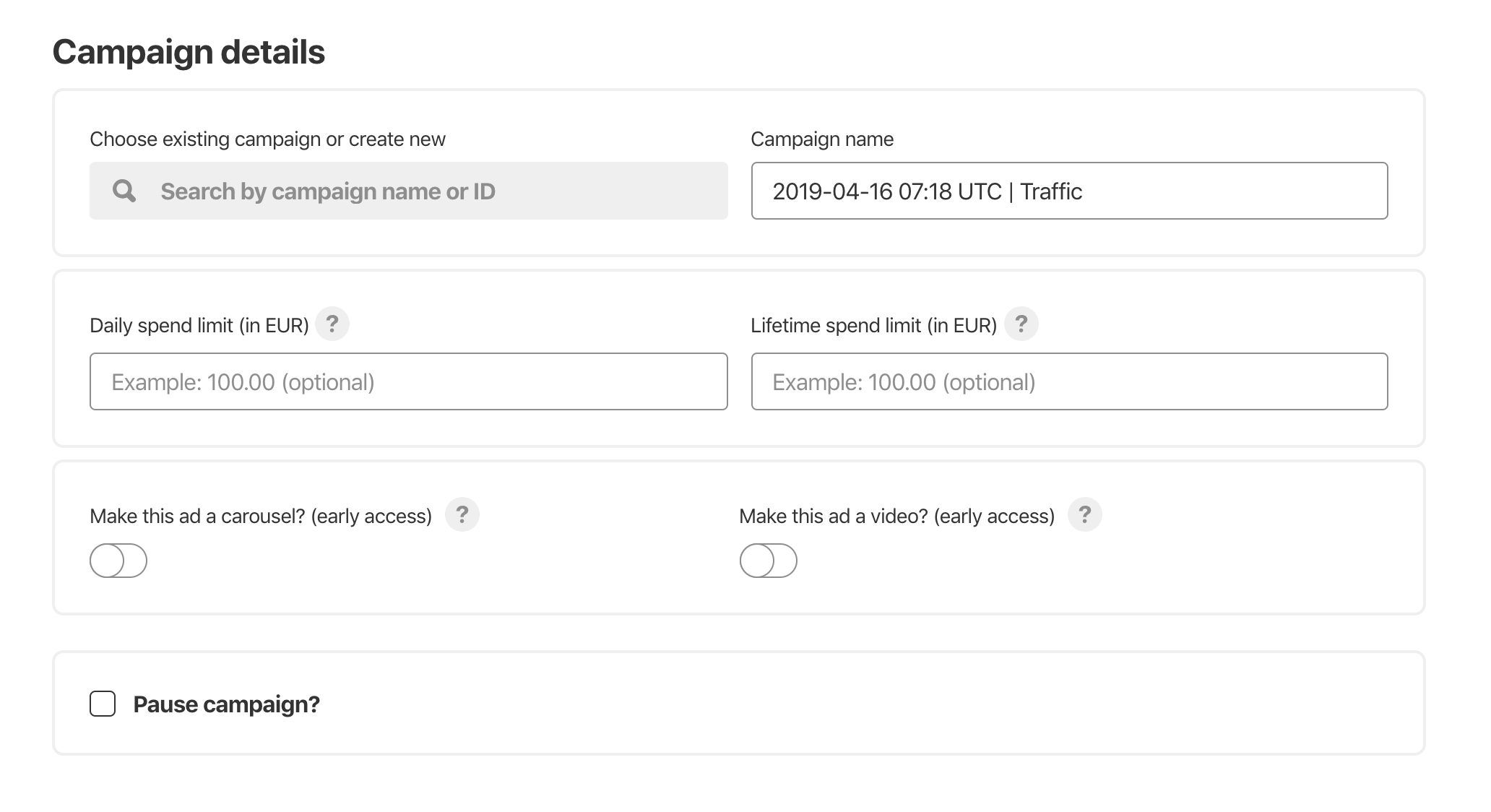
- Define a spending limit through “Daily Budget” or “Lifetime Budget”. This step is optional.
- Create a paused campaign by ticking off “pause campaign”.
- Select a previously created group of ads, or create a new one.
- Define your target group. Through “Create a new target group” you can, among other things, focus on clients on your customer list.
- Concerning your ads’ placement, “All” is selected by default on Pinterest. Alternatively, you can select “Browse” or “Search”. In case of the former, your ad is displayed in the Start Feed and with related Pins, in case of the latter, in the search results and related Pins. Generally speaking, “Browse” works better for targeting according to interests, and “Search” for targeting according to keywords.
- In the next step, you can add interests and keywords. For optimal results, Pinterest recommends adding at least 25 keywords.
- Enter a budget and schedule. Set a daily spending limit via selecting “Daily Budget”, or a limit for the entire duration of the campaign by selecting “Lifetime Budget”.
- Enter your maximum bid for “Optimizing” and “Delivery”. Ticking off “Accelerated” instead of “Standard” allows for quicker spending of the budget. This might result in your full budget being spent before your campaign is planned to end, but it will never be exceeded. This option is worth a shot if you want to make a big impact in a short amount of time.
- Finally, select Pins for your campaign, or create new ones. Equip them with a name and an URL. Note that these Pins must not be saved on secret boards, or show third-party videos or GIFs.
How Pinterest’s bidding system works
On Pinterest, ads are being delivered to your target audience in the same manner as on Facebook: through an auction. The highest bidder does not always win the prominent ad space, because two more factors are being taken into consideration:
- The various ads’ respective chances of success.
- Quality and relevance of ads for the target group.
This means that not only the amount of money you want to spend matters but also how well your ad fits the target location. Nonetheless, your bid shouldn’t be too small, or the chances of your ads being displayed often will dwindle. Pinterest offers you guidance in the bidding process by informing you how well your bid is doing in comparison to others (too low, suitable, or too high).
It might very well happen that you are paying less than your original bid for your ad since Pinterest is only ever charging enough to outbid the next closest bid in an auction.
Tracking with Pinterest Tag
By clicking on “Analytics” in the top left corner, you get a first impression of your campaigns’ efficiency, including all clicks, the engagement rate, and CPC. Select any given campaign to receive more detailed information about it.
Additionally, you can use a Pinterest Tag for tracking. This Tag is a piece of JavaScript code that you can integrate into your website in order to enable the tracking of 9 conversion activities:
- PageVisit: Views of primary pages, such as article or product pages
- ViewCategory: Views of category pages
- Search: Search queries on the website
- AddToCart: Articles that have been added to the shopping cart
- Checkout: Completed transactions
- WatchVideo: Video views
- Signup: Registrations for products or services
- Lead: Downloads and contact requests on your page
- Custom: Customized events
Learn how to set up your Pinterest tag in this detailed guide from Pinterest.
Tips for successful campaigns
Once you have set the framework for your campaigns, your ads’ success is primarily determined by your Pins. The following tips will help you reach your goals.
Value quality
Attention-grabbing visual content is the prerequisite for getting Pinners to click on your ads. Use pictures in portrait orientation, ideally in a 2:3 ratio, and pay close attention to using high resolution and a professional appearance.
Provide Action
Lifestyle pictures and videos are the be-all and end-all on Pinterest. Therefore, be sure to show your products or services “in action”.
Include text
Considering images are at the center of Pinterest, you still shouldn’t neglect words. Text overlays with a Call to Action may increase your sales by 6 per cent, according to Pinterest. Signal words like “new” enhance your ads’ effectiveness even more.
Use really good descriptions
Descriptions are the place for giving valuable added information to your users and incentivizing them to click once and for all. The first 30 to 60 characters are most significant, since the rest may potentially not be displayed in the feed. Pinterest also recommends to mention the name of your brand right at the beginning of the description, in order to increase brand awareness.
Use How-to videos
Create ads with added value for other Pinners. How-to videos, along with Storytelling videos, are particularly successful, according to a study by Pinterest.
For some industries, Pinterest Ads are particularly promising
Pinterest Ads can be valuable to companies from a variety of industries. However, some topics are especially popular on the platform – traditionally, Health, DIY, Fashion, and Beauty products. In general, companies that can display their products or services in the form of pretty images have an advantage over those who can’t. With a dash of creativity, however, Pinterest is also a great fit for insurances, financial service providers, or lawyers.
Pinterest Ads are especially useful for increasing your reach and approaching people outside of your community. The fact that Pinners spend more money on shopping than other people, according to a recent study, is an additional reason for trying out Promoted Pins. It’s key to have high-quality Pins, and first decide on who you want to show your ads to, and where. This way, you will be able to make the most of your plus in reach.
Publishing content on various channels, an all-in-one solution for customer care, and much more. Start a free Swat.io trial now!
 Published: 18. April 2019
Published: 18. April 2019  Updated: 10. January 2023
Updated: 10. January 2023 








